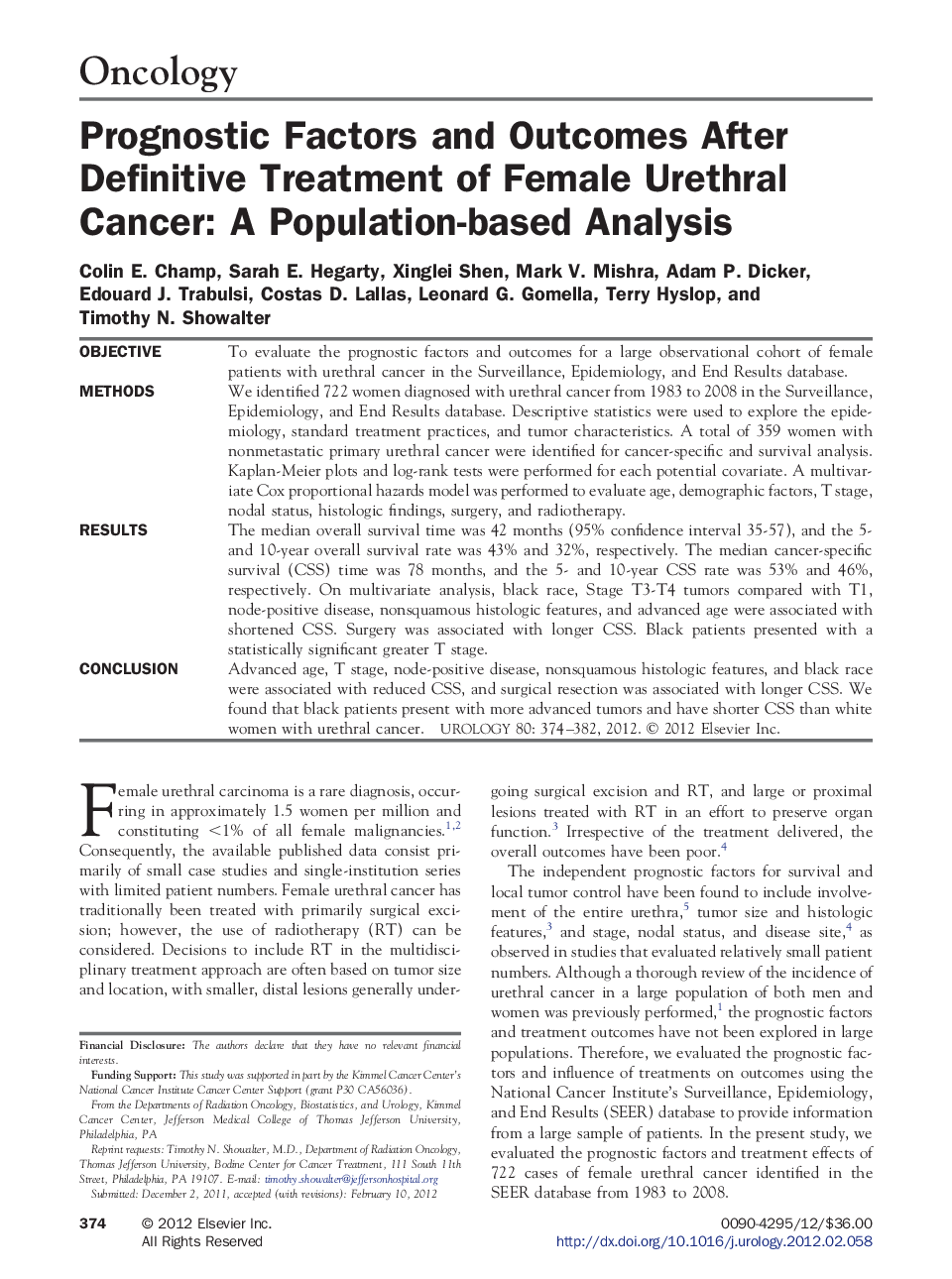| Article ID | Journal | Published Year | Pages | File Type |
|---|---|---|---|---|
| 3899688 | Urology | 2012 | 9 Pages |
ObjectiveTo evaluate the prognostic factors and outcomes for a large observational cohort of female patients with urethral cancer in the Surveillance, Epidemiology, and End Results database.MethodsWe identified 722 women diagnosed with urethral cancer from 1983 to 2008 in the Surveillance, Epidemiology, and End Results database. Descriptive statistics were used to explore the epidemiology, standard treatment practices, and tumor characteristics. A total of 359 women with nonmetastatic primary urethral cancer were identified for cancer-specific and survival analysis. Kaplan-Meier plots and log-rank tests were performed for each potential covariate. A multivariate Cox proportional hazards model was performed to evaluate age, demographic factors, T stage, nodal status, histologic findings, surgery, and radiotherapy.ResultsThe median overall survival time was 42 months (95% confidence interval 35-57), and the 5- and 10-year overall survival rate was 43% and 32%, respectively. The median cancer-specific survival (CSS) time was 78 months, and the 5- and 10-year CSS rate was 53% and 46%, respectively. On multivariate analysis, black race, Stage T3-T4 tumors compared with T1, node-positive disease, nonsquamous histologic features, and advanced age were associated with shortened CSS. Surgery was associated with longer CSS. Black patients presented with a statistically significant greater T stage.ConclusionAdvanced age, T stage, node-positive disease, nonsquamous histologic features, and black race were associated with reduced CSS, and surgical resection was associated with longer CSS. We found that black patients present with more advanced tumors and have shorter CSS than white women with urethral cancer.
